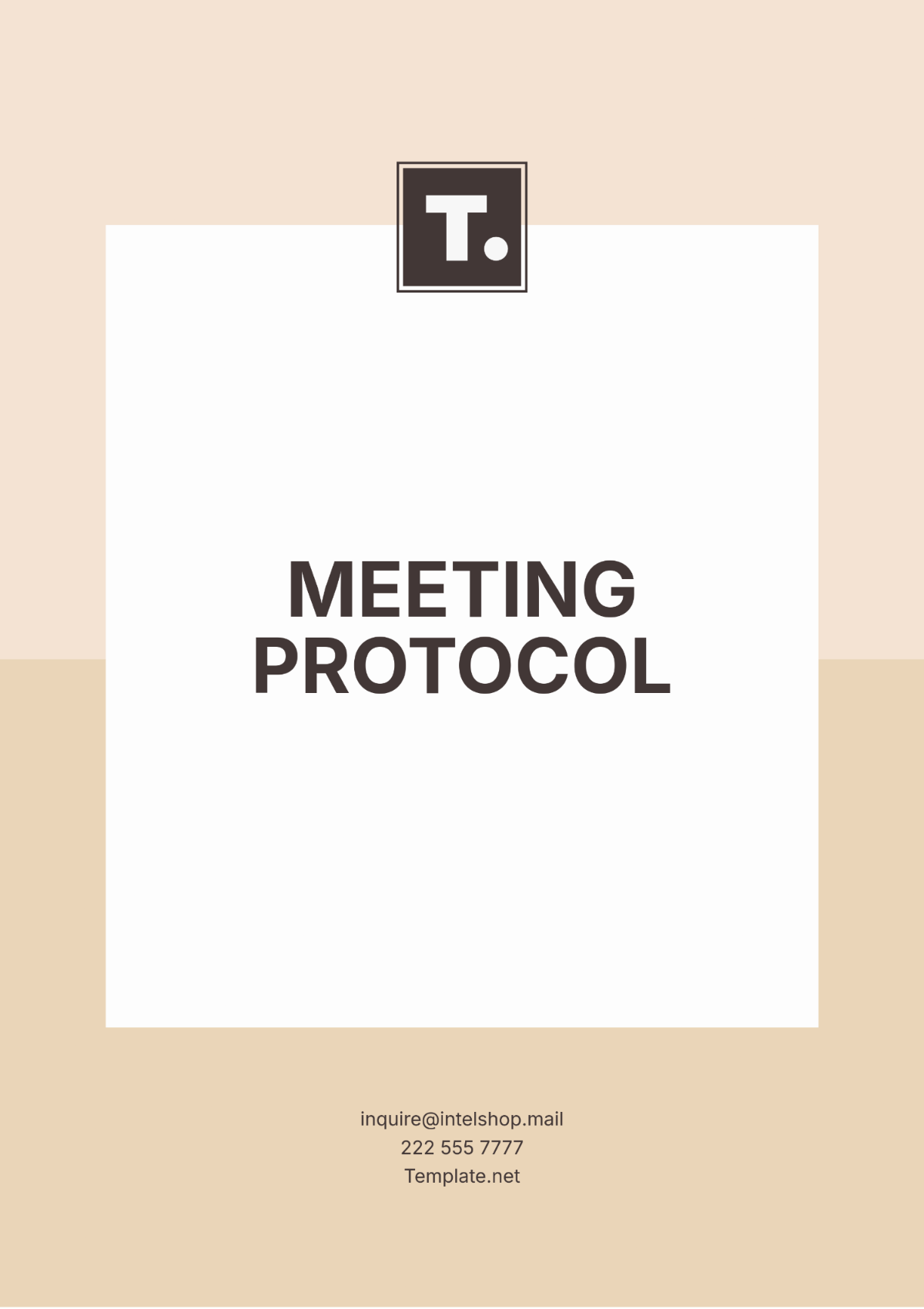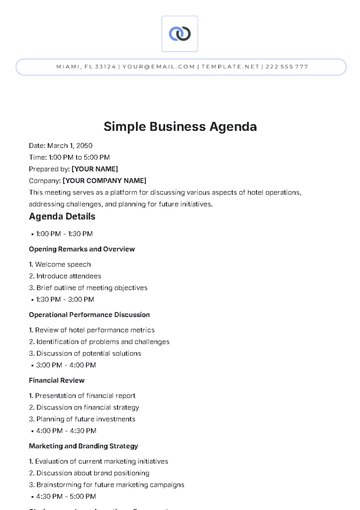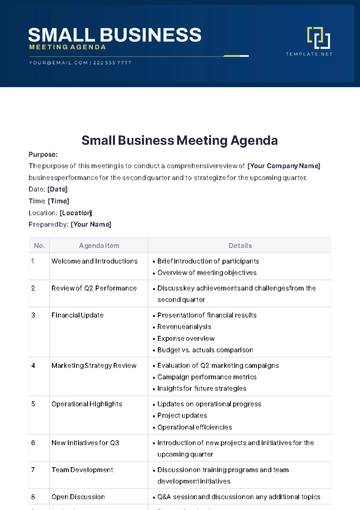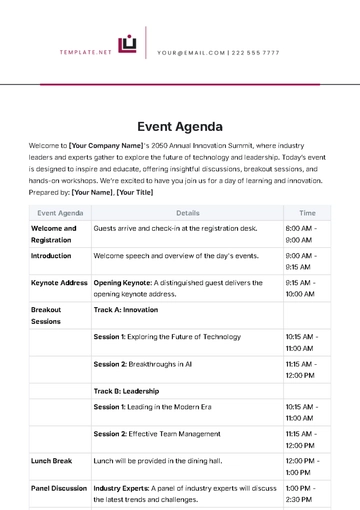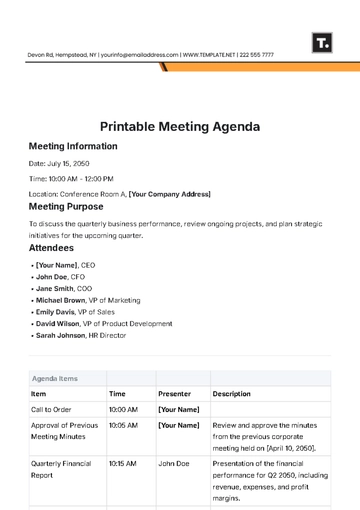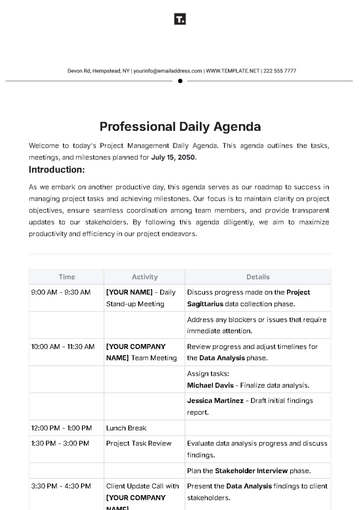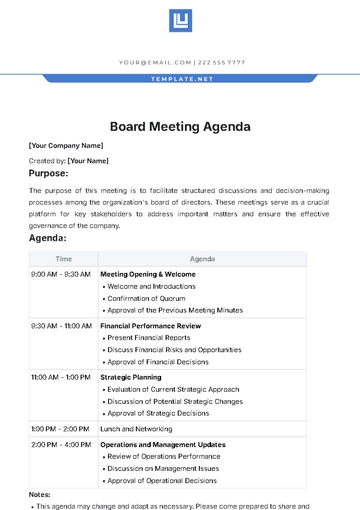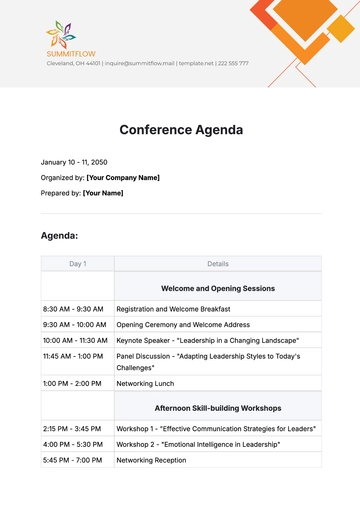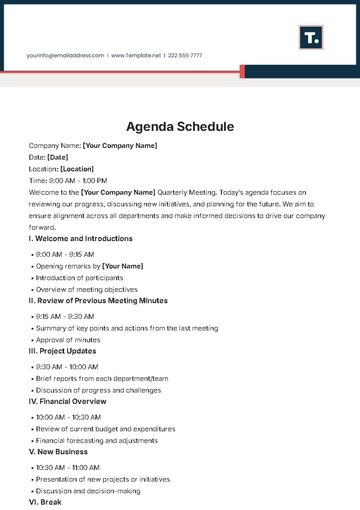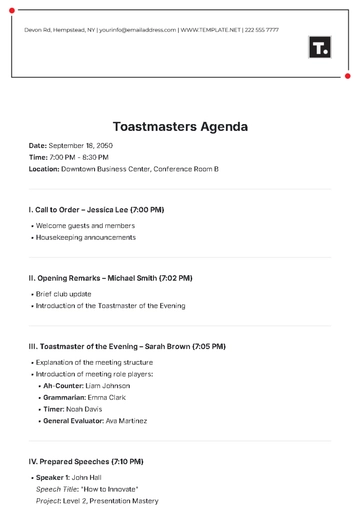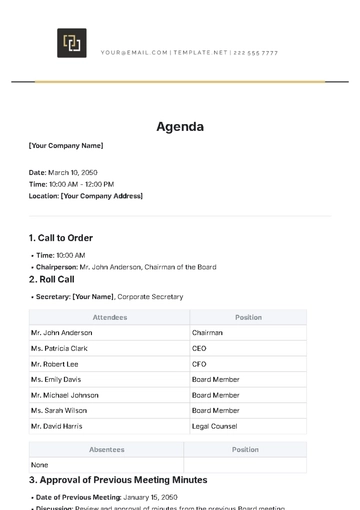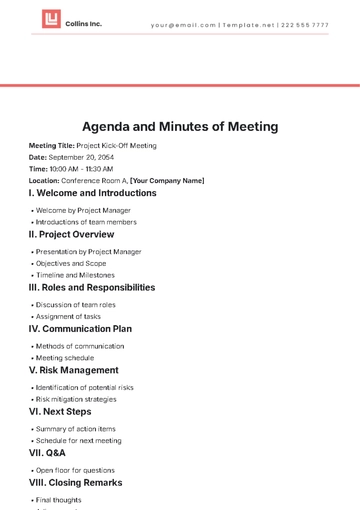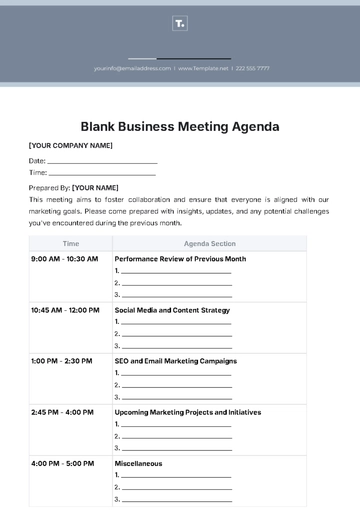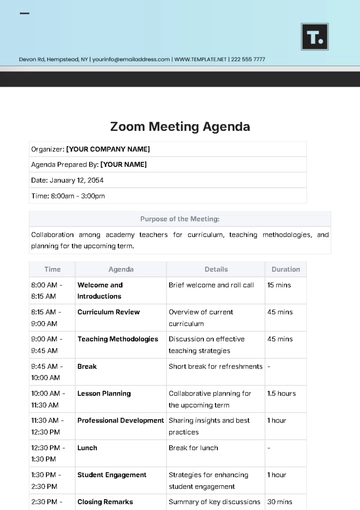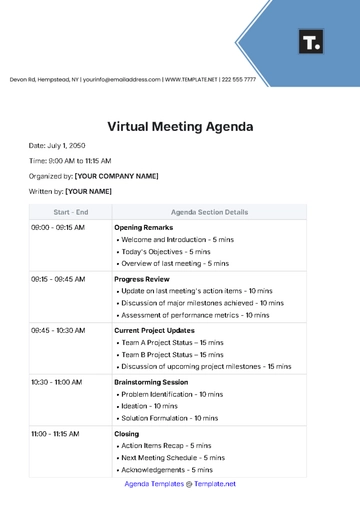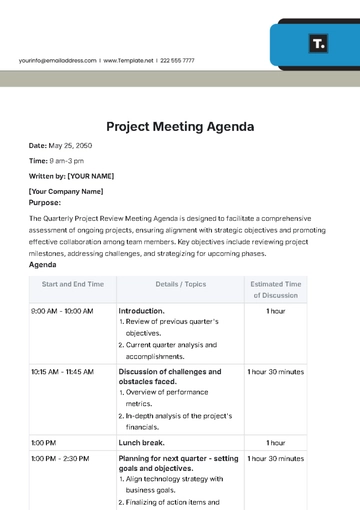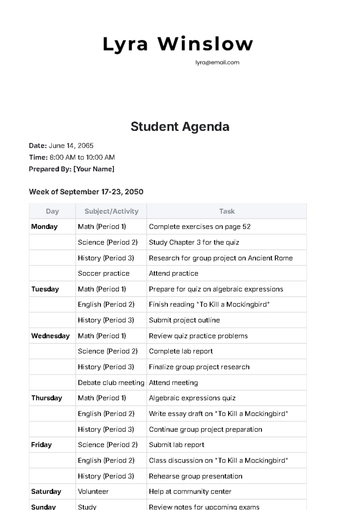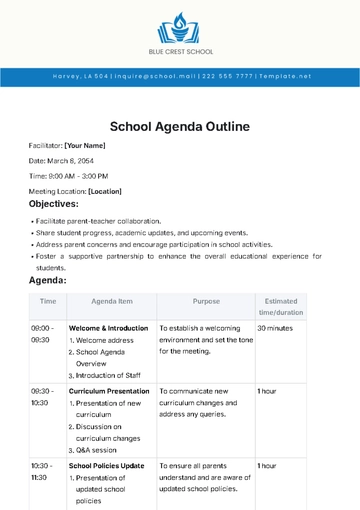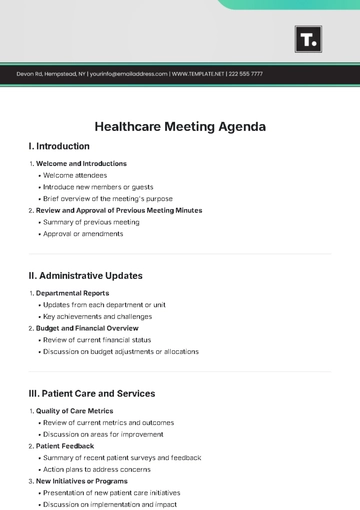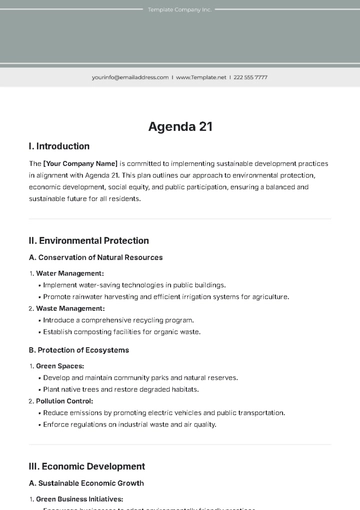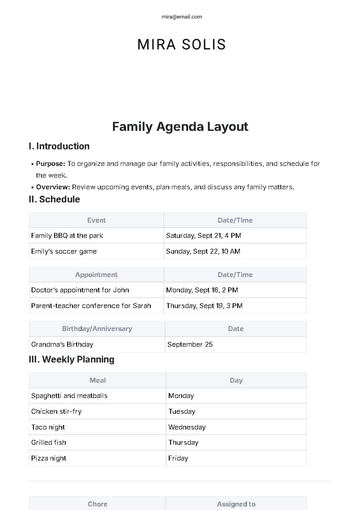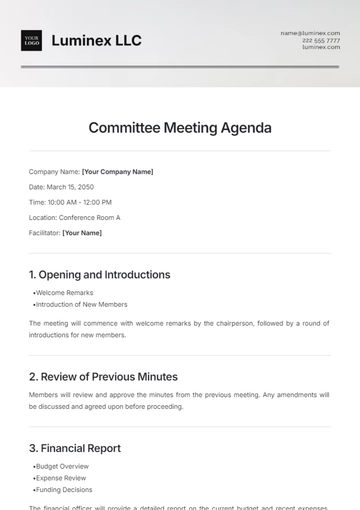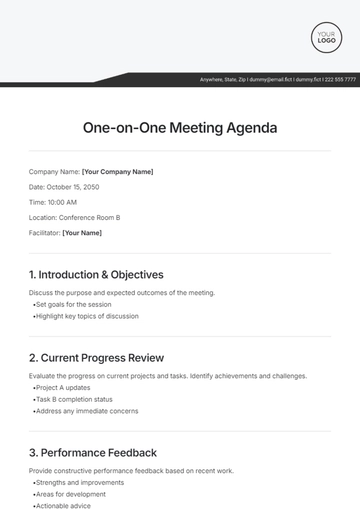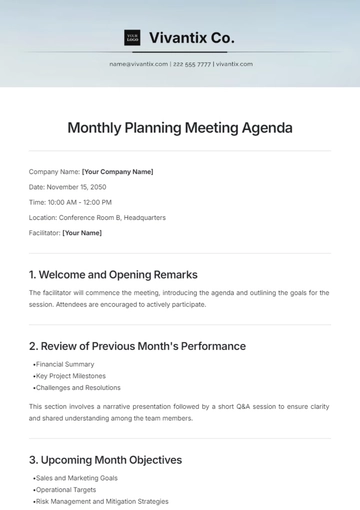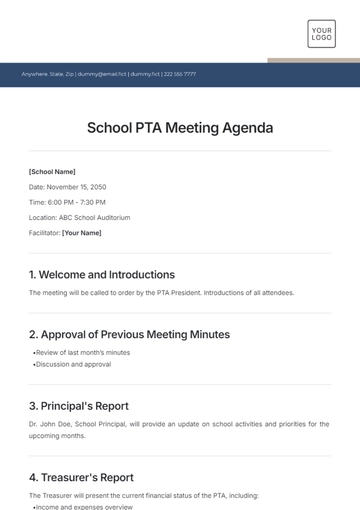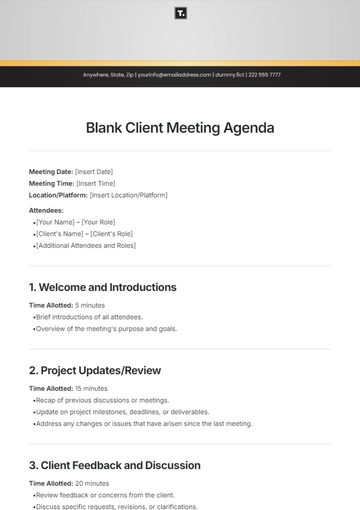Meeting Protocol
This protocol was diligently prepared by:
I. Objectives
The objectives of this meeting are multi-fold. Firstly, it aims to align all team members towards the ultimate organizational goals. Secondly, we are keen on fostering inter-departmental collaboration and cohesion, as we believe, unity in action is crucial for our success.
II. Protocol Overview
The Goal of the Protocol Overview is to give a framework to the prior, during, and after phases of the upcoming meeting. This comprises setting up the meeting objectives, identifying attendees, preparing the agenda, assigning tasks, establishing ground rules, and setting up post-meeting follow-up actions.
II.I Meeting Objectives: This subsection outlines the specific goals and desired outcomes of the meeting, ensuring all participants are aligned on the purpose and expected results.
II.II Attendee Identification: Here, the key stakeholders and participants for the meeting are identified, ensuring that all necessary individuals are included to achieve the meeting objectives effectively.
II.III Agenda Preparation: This step involves crafting a detailed agenda that outlines the topics to be discussed, along with allocated time slots, to keep the meeting focused and productive.
II.IV Task Assignment: Responsibilities are delegated among attendees to ensure that necessary actions are taken before, during, and after the meeting to fulfill its objectives.
II.V Ground Rules Establishment: Ground rules, such as respecting speaking turns and maintaining confidentiality, are established to foster a respectful and efficient meeting environment, enhancing collaboration and communication among participants.
III. Procedure
This section's meeting protocol deals with how the meeting will be conducted. This will encompass everything from the overview of the full meeting phases including the beginning, middle, and conclusion. It ensures that every individual involved is clear on their roles and responsibilities, which averts confusion and enhances productivity.
III.I Meeting Protocol Overview:
Outlines the phases of the meeting: beginning, middle, and conclusion.
Clarifies roles and responsibilities for all participants.
Averts confusion and enhances productivity by ensuring clarity.
III.II Roles and Responsibilities:
Clearly defines the responsibilities of each individual involved in the meeting.
Ensures that everyone understands their role and contribution.
Facilitates smoother execution of tasks and discussions.
III.III Enhancing Productivity:
Establishes a structured framework for conducting the meeting.
Encourages efficient use of time by adhering to the outlined protocol.
Promotes active participation and engagement among attendees.
IV. Data Collection
A good meeting always generates actionable data. Herein, we provide standardized mechanisms for collecting, recording, and disseminating the data that arise during our meeting. This will enable the members to keep track of crucial details and encourage accountability.
IV.I Structured Data Gathering: Implementing standardized templates and forms ensures consistent data collection across all meetings, facilitating easy comparison and analysis of key points discussed.
IV.II Real-time Documentation Tools: Utilizing digital platforms or software during meetings allows for immediate recording and sharing of data, promoting efficiency and reducing the risk of information loss.
IV.III Clear Assignments and Responsibilities: Designating specific individuals to oversee data collection tasks ensures that every aspect is covered, enhancing accountability and follow-through on action items.
IV.IV Periodic Data Review Sessions: Scheduled intervals for reviewing collected data provide opportunities to assess progress, identify trends, and adjust strategies as necessary, fostering continuous improvement.
IV.V Feedback Integration Mechanisms: Establishing channels for receiving feedback on data collection processes empowers participants to suggest improvements, resulting in more effective and streamlined procedures over time.
V. Safety Considerations
This section outlines the safety protocols that should be adhered to during the meeting. Given the current scenario of a globally spreading pandemic, the company is especially keen on maintaining hygiene and abiding by social distancing norms. Hence, we have included a series of measures and guidelines to ensure the safety of our meeting attendees.
V.I Hygiene Measures:
Attendees are required to sanitize their hands upon entry and exit of the meeting venue.
Regular disinfection of meeting rooms and surfaces will be conducted before and after each session.
Facemasks are mandatory for all participants throughout the meeting
V.II Social Distancing Protocols
Seating arrangements will be organized to ensure a minimum distance of 6 feet between individuals.
Limiting the number of attendees under the capacity of the meeting venue to maintain social distancing.
Encouraging virtual attendance for individuals who may have health concerns or are unable to adhere to social distancing guidelines.
V.III Health Monitoring Guidelines
Attendees are required to self-monitor their health and refrain from attending if they display any symptoms of illness.
Temperature checks may be conducted at the entrance, and individuals with a fever will not be permitted to enter the premises.
Any participant who develops symptoms during the meeting should inform the organizer immediately and leave the premises for their safety and the safety of others.
VI. Expected Results
If this meeting is successfully executed as planned, we anticipate several beneficial outcomes. One key benefit would be enhanced communication among team members, which can significantly contribute to the overall efficiency at work. Not only would we be better placed to make effective decisions faster, but also there would be a timely resolution to any current prevailing issues. Above all, this meeting also offers us a platform to identify potential opportunities that could foster future growth for our organization.
VII. Conclusion
By following this protocol throughout our meeting, together we can work towards creating a conducive atmosphere that encourages open communication, mutual respect, shared goals, and robust team performance.
[Your Company Name] strongly believes that implementing this meeting protocol will substantively contribute to our ability to build consensus, make informed decisions, and move projects forward more effectively and efficiently.
Protocol Templates @ Template.net
